The Message (1976 film)
5.9 /10 3 Votes
Duration Language EnglishArabic | 8.6/10 IMDb Genre Adventure, Biography, Drama Casting director Maude Spector Country MoroccoLibyaLebanonUnited KingdomUnited States | |||||||||||||||||||||||||||||||||
 | ||||||||||||||||||||||||||||||||||
Release date 1976 (1976)(Arabic)March 9, 1977 (1977-03-09)(English) Writer H.A.L. Craig, Tewfik El-Hakim, A.B. Jawdat El-Sahhar, A.B. Rahman El-Sharkawi, Mohammad Ali Maher Initial release March 9, 1977 (New York City) Art directors Norman Dorme, Abdel Moneim Shoukry Cast Similar movies Gandhi , Bruce Almighty , Life of Pi , Malcolm X , Of Gods and Men , Words with Gods | ||||||||||||||||||||||||||||||||||
The Message (Arabic: الرسالة Ar-Risālah; originally known as Mohammad, Messenger of God) is a 1976 epic historical drama film directed by Moustapha Akkad, chronicling the life and times of Muhammad. Released in Arabic (1976) and English (1977), The Message serves as an introduction to early Islamic history.
Contents
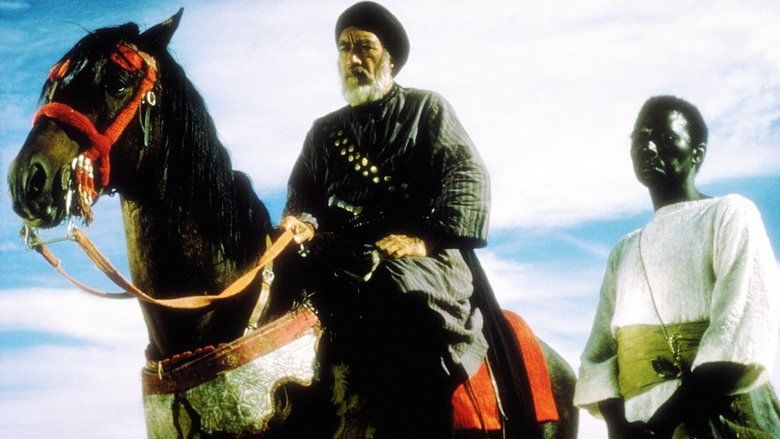
The film was nominated for Best Original Score in the 50th Academy Awards, composed by Maurice Jarre, but lost the award to Star Wars (composed by John Williams).
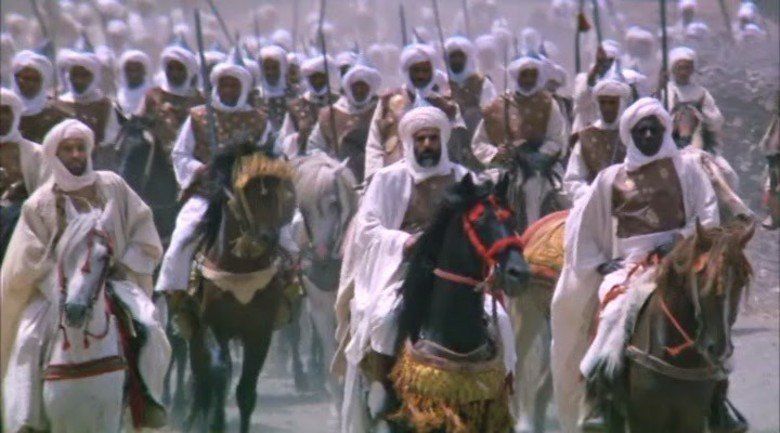
Plot
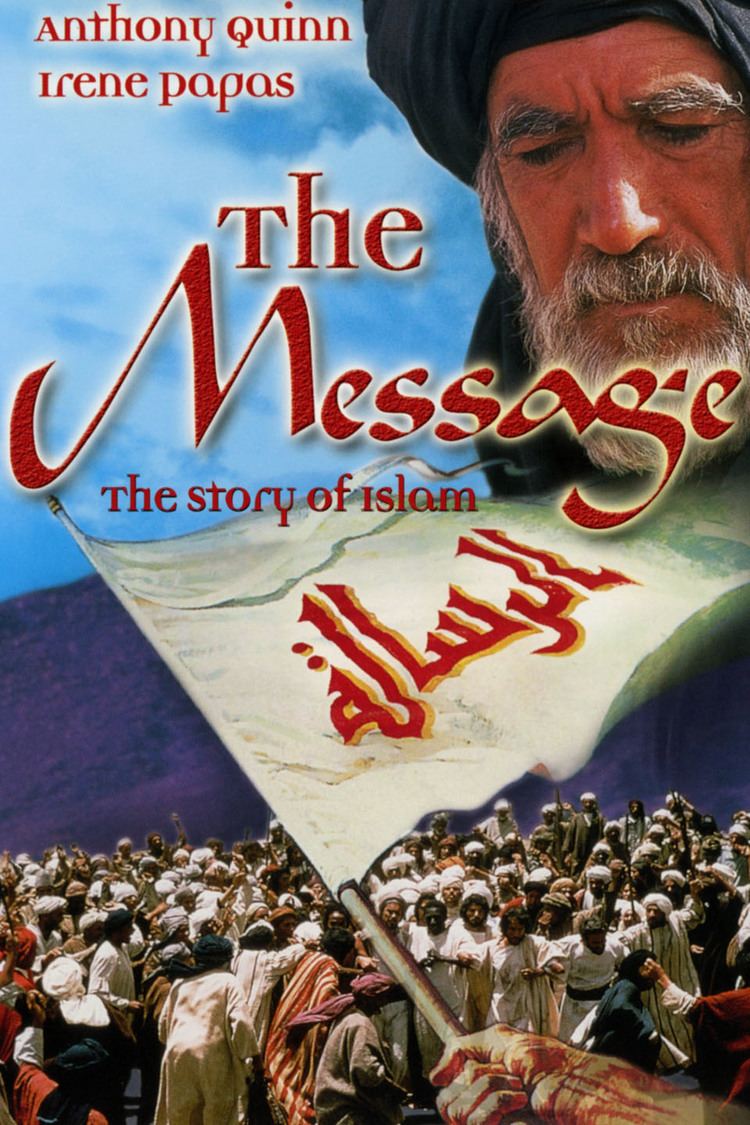
The film follows Muhammad starting with Islam's beginnings in Mecca in which the first Muslims are persecuted for their beliefs, the exodus to Medina, and ending with the Muslims' triumphant return to Mecca.
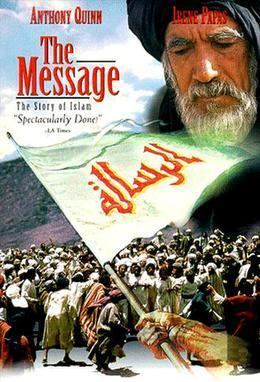
A number of crucial events, such as the Battle of Badr and Battle of Uhud are depicted, and the majority of the story is told from the point of view of peripheral individuals such as Hamza ibn `Abd al-Muttalib (Muhammad's uncle) [who, in this movie, is a composite of not only Hamza, but the Prophet's cousin Ali and Umar ibn al-Khattab], Bilal and Zayd (two of the Muhammad's closest companions), and on the other side Abu Sufyan (the leader of Mecca) and his wife Hind bint Utbah (initially enemies of Islam who later become Muslims themselves).
Production
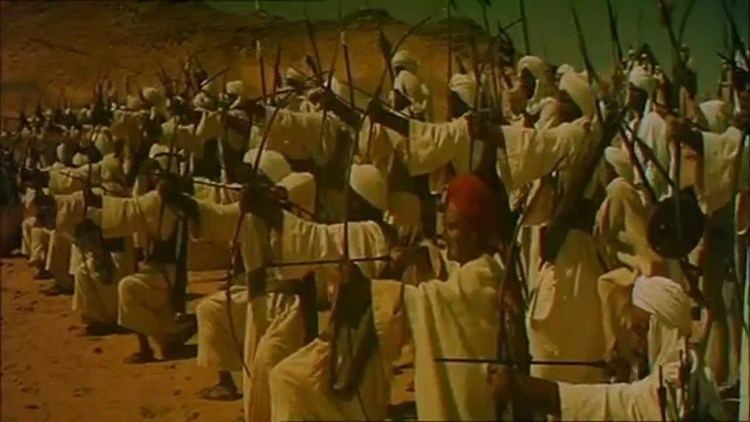
While creating The Message, director Akkad, who was Muslim, consulted Islamic clerics in a thorough attempt to be respectful towards Islam and its views on portraying Muhammad. He received approval from Al-Azhar in Egypt but was rejected by the Muslim World League in Mecca, Saudi Arabia. Akkad had to go outside the United States in order to raise the production money needed for the film. Lack of financing nearly shut down the film because its initial backers pulled out.
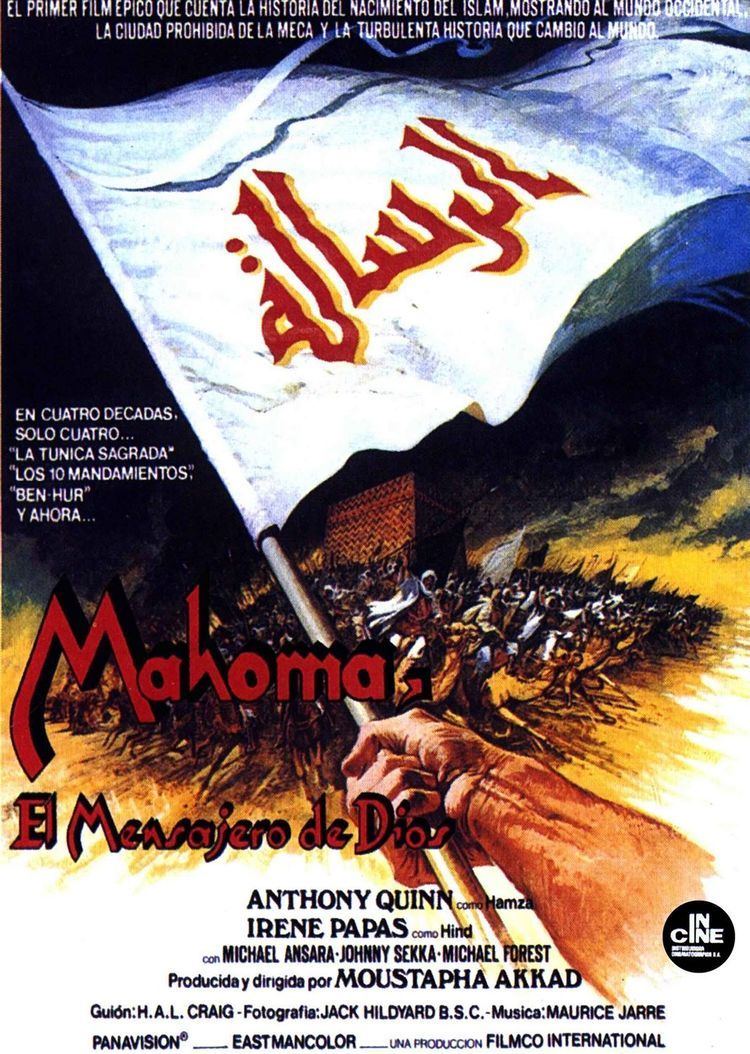
Financing for the project finally came from the governments of Kuwait, Libya and Morocco, but when it was rejected by the Muslim World League, Emir Sabah III Al-Salim Al-Sabah of Kuwait withdrew financial support. King Hassan II of Morocco gave Akkad full support for the production, while King Khalid bin Abdulaziz of Saudi Arabia and then-Libyan leader Muammar al-Gaddafi provided financial support too.
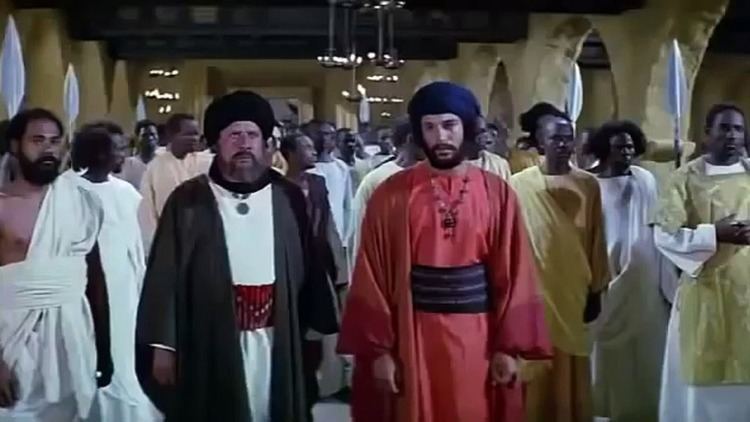
The film was shot in Morocco and Libya, with production taking four and a half months to build the cities of Mecca and Medina as they looked in Muhammad's time. Production took one year, Akkad filmed for six months in Morocco, but had to stop when the Saudi government exerted great pressure on the Moroccan government to stop the project. Akkad went to al-Gaddafi for support in order to complete the project, and the Libyan leader allowed him to move the filming to Libya for the remaining six months.
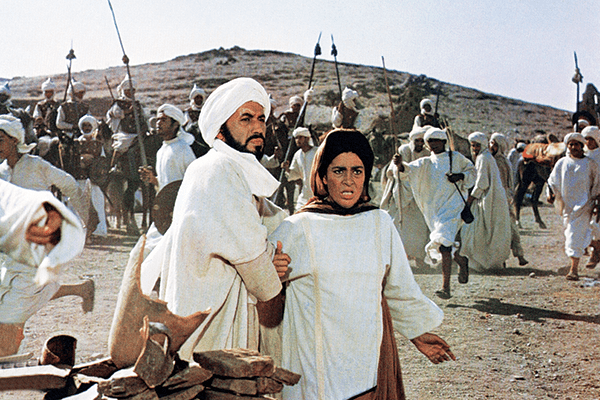
Akkad saw the film as a way to bridge the gap between the Western and Islamic worlds, stating in a 1976 interview:
"I did the film because it is a personal thing for me. Besides its production values as a film, it has its story, its intrigue, its drama. Besides all this I think there was something personal, being a Muslim myself who lived in the west I felt that it was my obligation my duty to tell the truth about Islam. It is a religion that has a 700 million following, yet it's so little known about which surprised me. I thought I should tell the story that will bring this bridge, this gap to the west."
Akkad also filmed an Arabic version of the film (in which Muna Wassef played Hind) simultaneously with an Arab cast, for Arabic-speaking audiences. He felt that dubbing the English version into Arabic would not be enough, because the Arabic acting style differs significantly from that of Hollywood and Bollywood. The actors took turns doing the English and Arabic versions in each scene, and both are now sold together on some DVDs.
Depiction of Muhammad
In accordance with Muslim beliefs regarding depictions of Muhammad, he was not depicted on-screen nor was his voice heard because Islamic tradition generally forbids any direct representation of religious figures. At the beginning of the film, the following disclaimer is displayed:
The makers of this film honour the Islamic tradition which holds that the impersonation of the Prophet offends against the spirituality of his message. Therefore, the person of Mohammad will not be shown (or heard).
The rule above was also extended to his wives, his daughters including Fatimah, his sons-in-law, and the first caliphs (Abu Bakr, Umar, Uthman, and Ali ibn Talib his paternal cousin). This left Muhammad's uncle Hamza (Anthony Quinn) and his adopted son Zayd (Damien Thomas) as the central characters. During the battles of Badr and Uhud depicted in the movie, Hamza was in nominal command, even though the actual fighting was led by Muhammad.
Whenever Muhammad was present or very close by, his presence was indicated by light organ music. His words, as he spoke them, were repeated by someone else such as Hamza, Zayd or Bilal. When a scene called for him to be present, the action was filmed from his point of view. Others in the scene nodded to the unheard dialogue or moved with the camera as though moving with Muhammad.
The closest the film comes to a depiction of Muhammad or his immediate family are the view of Ali's famous two-pronged sword Zulfiqar during the battle scenes, a glimpse of a staff in the scenes at the Kaaba or in Medina, and Muhammad's camel, Qaswa.
Reception
In July 1976, five days before the film opened in London's West End, threatening phone calls to a cinema prompted Akkad to change the title from Mohammed, Messenger of God to The Message, at a cost of £50,000.
Sunday Times film critic Dilys Powell described the film as a "Western … crossed with Early Christian". She noted a similar avoidance of direct depictions of Jesus in early biblical films, and suggested that "from an artistic as well as a religious point of view the film is absolutely right".
In 1977, as the film was scheduled to premiere in the United States, a splinter group of the black nationalist Nation of Islam calling itself the Hanafi Movement staged a siege of the Washington, D.C. chapter of the B'nai B'rith. Under the mistaken belief that Anthony Quinn played Mohammed in the film, the group threatened to blow up the building and its inhabitants unless the film's opening was cancelled. The standoff was resolved after the deaths of a journalist and a policeman, but "the film's American box office prospects never recovered from the unfortunate controversy."
The film proved "a huge success" with Shiite Iranians.
Muna Wassef’s role as Hind in the Arabic-language version won her international recognition.
Awards and nominations
The film was nominated for an Oscar in 1977 for Best Music, Original Score for the music by Maurice Jarre.
Music
The musical score of The Message was composed and conducted by Maurice Jarre, and performed by the London Symphony Orchestra.
Side One
- The Message (03:01)
- Hegira (04:24)
- Building the First Mosque (02:51)
- The Sura (03:34)
- Presence of Mohammad (02:13)
- Entry to Mecca (03:15)
Side Two
- The Declaration (02:38)
- The First Martyrs (02:27)
- Fight (04:12)
- Spread of Islam (03:16)
- Broken Idols (04:00)
- The Faith of Islam (02:37)
- The Message (03:09)
- Hegira (04:39)
- Building the First Mosque (02:33)
- The Sura (03:32)
- Presence of Mohammad (02:11)
- Entry to Mecca (03:14)
- The Declaration (02:39)
- The First Martyrs (02:26)
- Fight (04:11)
- The Spread of Islam (03:35)
- Broken Idols (03:40)
- The Faith of Islam (02:33)
Remake
In October 2008, producer Oscar Zoghbi revealed plans to "revamp the 1976 movie and give it a modern twist," according to the Internet Movie Database and the World Entertainment News Network. He hopes to shoot the remake, tentatively titled The Messenger of Peace, in the cities of Mecca and Medina in Saudi Arabia.
In February 2009, Barrie M. Osborne, producer of The Matrix and The Lord of the Rings film trilogies, was attached to produce a new film about Muhammad. The film is to be financed by a Qatari media company and will be supervised by Sheikh Yusuf al-Qaradawi.
References
The Message (1976 film) WikipediaMohammad, Messenger of God (film) IMDbThe Message (1976 film) themoviedb.org
